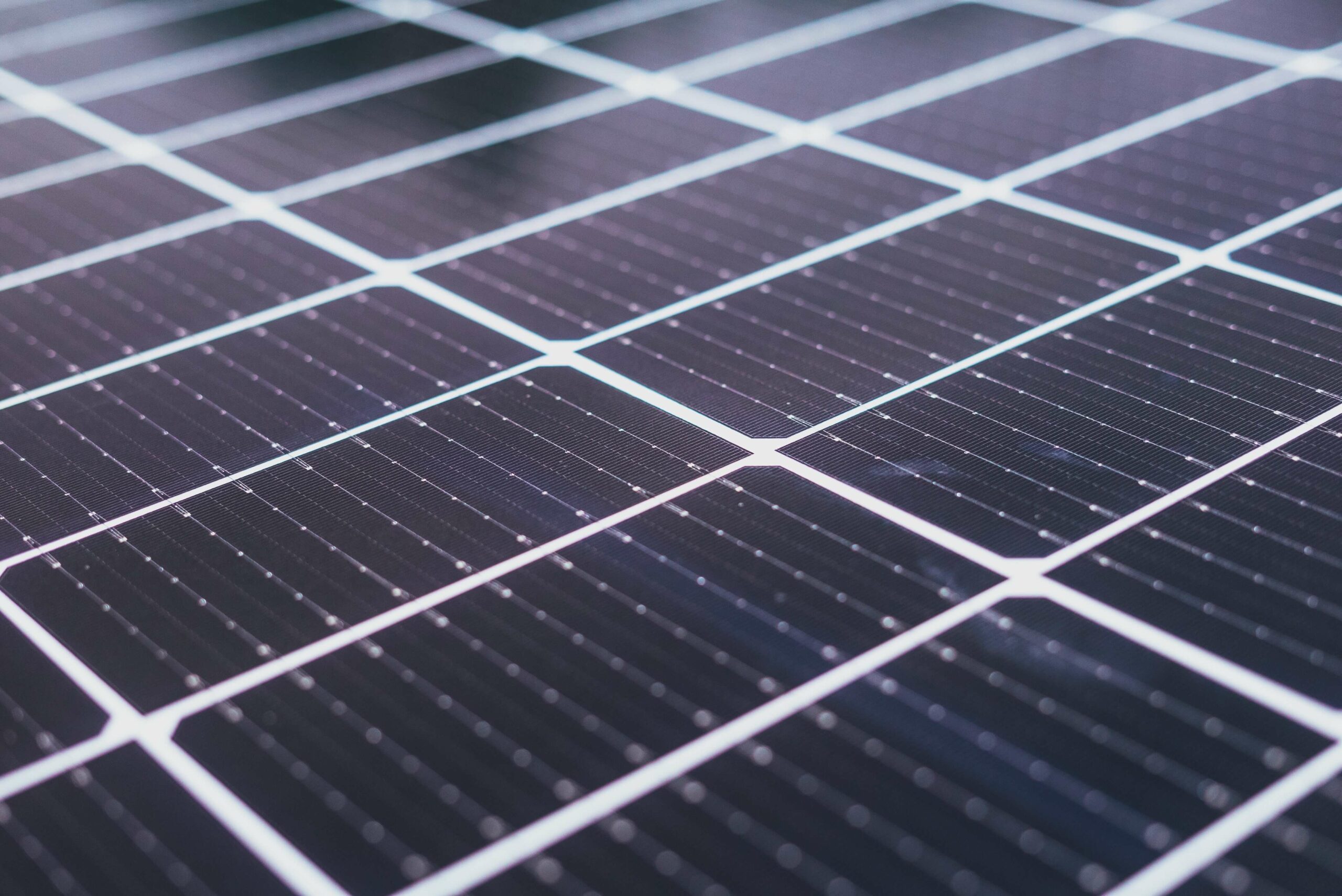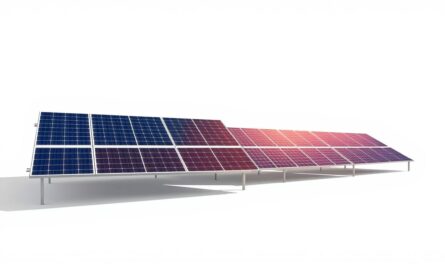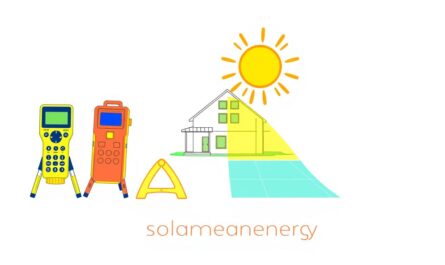Solar panels are a cost-effective, environmentally friendly solution for generating electricity. With the decrease in the cost of solar panels and the increase in efficiency, solar energy is becoming increasingly cost-effective compared to traditional forms of energy generation. Solar panels convert sunlight into usable electricity through photovoltaic cells, which are made of semiconductor materials, usually silicon. They require minimal maintenance, usually just cleaning to remove dust or debris that might accumulate on the surface, and are designed to withstand the elements and have a long lifespan. Investing in solar panels can reduce their dependence on fossil fuels and increase their energy independence.
Thank you for reading this post, don't forget to subscribe!Table of Contents
What are the most important factors when buying solar panels?
- Energy needs: One of the most important factors for buyers of solar panels is determining their energy needs. This includes assessing the energy currently being used and what energy needs will be in the future.
- Installation costs: The cost of installation is another critical factor for buyers. This includes the cost of the solar panels and any additional equipment or labor fees that may be required.
- Efficiency: The efficiency of solar panels is another key factor for buyers. The higher the efficiency, the more electricity the panels will produce, and the more cost-effective the investment will be.
- Durability and warranty: Solar panels are exposed to the elements, so buyers should consider the durability of the panels and the warranty offered by the manufacturer.
- Government incentives: Buyers should research and consider the government incentives and rebates available in their area, as these can significantly affect the overall cost-effectiveness of the investment.
Key Characteristics of Solar Panels
Photovoltaic (PV) cells: The main characteristic of solar panels is the presence of photovoltaic (PV) cells, which convert sunlight into electricity. These cells are made of semiconductor materials, usually silicon, and are responsible for generating electrical currents.
Solar panel efficiency: The efficiency of the solar panel is another important characteristic, which refers to the percentage of sunlight converted into usable electricity. The efficiency of solar panels ranges from around 15% to 22%.
Size and design: The size and design of solar panels are also essential characteristics. Solar panels come in various sizes and designs, and the choice of size and design will depend on the buyer’s energy needs and available space.
Durability: Solar panels are designed to withstand the elements and have a long lifespan. They are usually made of tempered glass and aluminum frames, making them durable.
Maintenance: Solar panels require minimal maintenance, usually just cleaning to remove dust or debris that might accumulate on the surface.
Environmentally friendly: Solar panels do not emit any pollutants or greenhouse gases during operation, making them an environmentally friendly energy source.
Scalability: Solar panels can be easily scaled up or down depending on the energy needs, making them a flexible and adaptable power source.
Energy independence: Solar panels allow for energy independence as they produce electricity from a renewable source, the sun, and reduce the dependence on fossil fuels.
Pros vs. Cons
Pros of Solar Panels
- Renewable energy source: Solar panels generate electricity from a renewable source, the sun, which is abundant and widely available.
- Low maintenance: Solar panels require minimal maintenance, usually just cleaning to remove dust or debris that might accumulate on the surface.
- Environmentally friendly: Solar panels do not emit any pollutants or greenhouse gases during operation, making them an environmentally friendly energy source.
- Energy independence: Solar panels allow for energy independence as they produce electricity from a renewable source, the sun, and reduce the dependence on fossil fuels.
- Cost-effective: With the decrease in the cost of solar panels and the increase in efficiency, solar energy is becoming increasingly cost-effective compared to traditional forms of energy generation.
Cons of Solar Panels
- Initial cost: The initial cost of installation can be high, although this cost has decreased over time.
- Efficiency: The efficiency of solar panels is not 100%, meaning that not all sunlight is converted into usable electricity.
- Weather dependency: Solar panels rely on sunlight to generate electricity so that the panels will produce less electricity on cloudy days or at night.
- Property restrictions: Some buyers may encounter restrictions on using solar panels due to zoning laws, homeowner association rules, or other regulations.
- Energy storage: Energy storage systems are required to keep the energy produced during the day to be used at night, which could add extra cost to the installation.
What are the parts of solar panels?
The main parts of a solar panel include:
Photovoltaic (PV) cells
These semiconductor materials, usually silicon, convert sunlight into electricity. The cells are connected to form a solar panel.
Glass cover
The PV cells are protected by a tempered glass cover, which allows sunlight to pass through while protecting the cells from damage.
Aluminum frame
The solar panel is mounted on an aluminum frame, providing structural support and easy installation.
Junction box: The junction box contains the electrical connections that allow the electricity generated by the PV cells to be directed to the inverter and/or battery storage system.
Inverter
The inverter converts the direct current (DC) electricity generated by the PV cells into alternating current (AC) electricity, which can be used to power homes and businesses.
Wiring
The wiring connects the PV cells, the junction box, the inverter, and battery storage systems.
Mounting system
the panels are mounted on a mounting system on a roof, a ground-mounted rack, or any other structure.
(Optional) Battery storage
Some solar panel systems have battery storage options that allow storing the electricity generated during the day to be used at night or on non-sunny days.
Understanding the Different Types of Solar Panels
There are several types of solar panels available, each with its unique characteristics:
Monocrystalline solar panels
These are made from a single silicon crystal and are the most efficient type of solar panel, with 15-22% efficiency. They are also the most expensive type of panel.
Polycrystalline solar panels
These are made from multiple silicon crystals and have 13-16% efficiency. They are less expensive than monocrystalline panels and are popular for residential and commercial installations.
Thin-film solar panels
These are made from a thin layer of semiconductor material, such as amorphous silicon, and have 7-13% efficiency. They are the least expensive type of solar panel and are often used in large-scale commercial and industrial installations.
Hybrid solar panels
This type combines different technologies, such as monocrystalline and thin film, to increase their efficiency and performance.
Bifacial solar panels
These solar panels can absorb sunlight on both sides, increasing the system’s efficiency by using the sunlight reflected by the surface on which the panel is installed.
Flexible solar panels
These solar panels are made with flexible materials allowing them to be mounted on curved surfaces, such as the roof of a boat or RV.
The most commonly used solar panels are monocrystalline and polycrystalline, made from silicon. Monocrystalline panels are considered the most efficient, with efficiencies ranging from 15-22%, while polycrystalline panels have efficiencies ranging from 13-16%. They are both popular choices for residential and commercial installations. Thin-film solar panels are also used in large-scale commercial and industrial installations due to their low cost and flexibility in design. Bifacial and flexible solar panels are becoming more popular in recent years, especially in applications where space is limited, or the surface is not flat.
Best buy option for homeowners
For homeowners, the best buy option for solar panels would depend on their specific energy needs and budget. However, some factors to consider when choosing solar panels include the following:
- Efficiency: Monocrystalline solar panels are the most efficient, with 15-22% efficiencies. They are also the most expensive type of panel.
- Cost: While the price of solar panels has dropped significantly in recent years, it is still relatively high compared to traditional forms of energy generation. Polycrystalline solar panels are less expensive than monocrystalline panels and are a popular choice for residential and commercial installations.
- Durability and warranty: Solar panels are exposed to the elements, so homeowners should consider the durability of the panels and the warranty offered by the manufacturer.
- Installation costs: The cost of installation is another critical factor for buyers. This includes the cost of the solar panels and any additional equipment or labor costs that may be required.
- Government incentives: Homeowners should research and consider the government incentives and rebates available in their area, as these can significantly affect the overall cost-effectiveness of the investment.
- Energy storage: If energy storage is needed, homeowners should choose a solar panel system with battery storage options, which allow storing the electricity generated during the day to be used at night or on non-sunny days.
It is recommended that homeowners consult with a solar panel expert or professional to help them determine the best option for their specific needs and budget.
Leading the Way: Top Solar Panel Producers in the United States
- First Solar: First Solar is one of the largest solar panel manufacturers in the world and is based in the United States. The company specializes in thin-film solar panels and has a production capacity of over 8 GW per year.
- SunPower: SunPower is a California-based company specializing in high-efficiency monocrystalline and polycrystalline solar panels. The company has a production capacity of over 4 GW per year.
- LG Energy Solutions: LG Energy Solutions is a South Korean electronics giant LG subsidiary. The company produces monocrystalline and polycrystalline solar panels with a production capacity of over 3 GW per year.
- JinkoSolar: JinkoSolar is a Chinese company with a significant presence in the United States. The company produces monocrystalline and polycrystalline solar panels and has a production capacity of over 2 GW per year.
- Canadian Solar: Canadian Solar is a Canadian company with a significant presence in the United States. The company produces monocrystalline and polycrystalline solar panels with a production capacity of over 1.5 GW per year.
Conclusion
In conclusion, solar panels are a cost-effective and environmentally friendly solution for generating electricity. Several solar panels have unique characteristics, such as monocrystalline, polycrystalline, thin-film, hybrid, bifacial, and flexible solar panels. The most commonly used solar panels are monocrystalline and polycrystalline, made from silicon.
When choosing solar panels, you need to consider your specific energy needs, budget, and government incentives available in your area. The efficiency of the solar panel, the cost of installation and maintenance, durability and warranty offered by the manufacturer, and energy storage options are also essential factors to consider.
Consultation with a solar panel expert or professional is highly recommended to help you determine the best option for your specific needs and budget. The future for solar energy looks bright as it is becoming more cost-effective, efficient, and accessible to homeowners.





